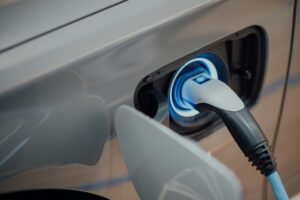
A few years ago, I was very interested in making our next auto purchase an electric car.
However, my desire was thwarted a bit after test-driving a Tesla in 2019 (I wrote about the experience here). I found the technology very cool, but getting in and out of the vehicle was too difficult for a person my size. Since then, Elon Musk has turned into Evil Personified, so I wouldn’t buy one of his cars even if it was a perfect fit.
I haven’t driven any other e-vehicles, but a friend came to visit us recently and got an electric BMW from the rental agency, which surprisingly didn’t upcharge him. It was much easier for me to access, the ride was smooth, and it didn’t have the Tesla’s giant distracting digital dashboard.
The problem was he couldn’t find anywhere to charge the BMW. Both the in-car display and Google Maps told him where there were charging ports nearby, but almost all of them were in private garages, where he couldn’t get to them. We also didn’t see a single gas station that had e-charging capabilities, nor any freestanding facilities he could use.
He never had to worry about the battery getting too low because he was only here for a few days and didn’t put a lot of miles on it. But he assumed he’d have to return it with the same level of charge it had when he rented it, just as you’d have to refill the gas tank in a combustion engine vehicle. Fortunately, after never finding a usable charging station, his concerns were alleviated when he brought the car back and was told there would be no additional fee.
I hope President Biden’s infrastructure act will dramatically increase the number and availability of recharging outlets nationwide. But until that happens — and considering the additional cost of having an electrician install a charging port in our garage — I think we’ll continue down the hybrid route when the time comes.
